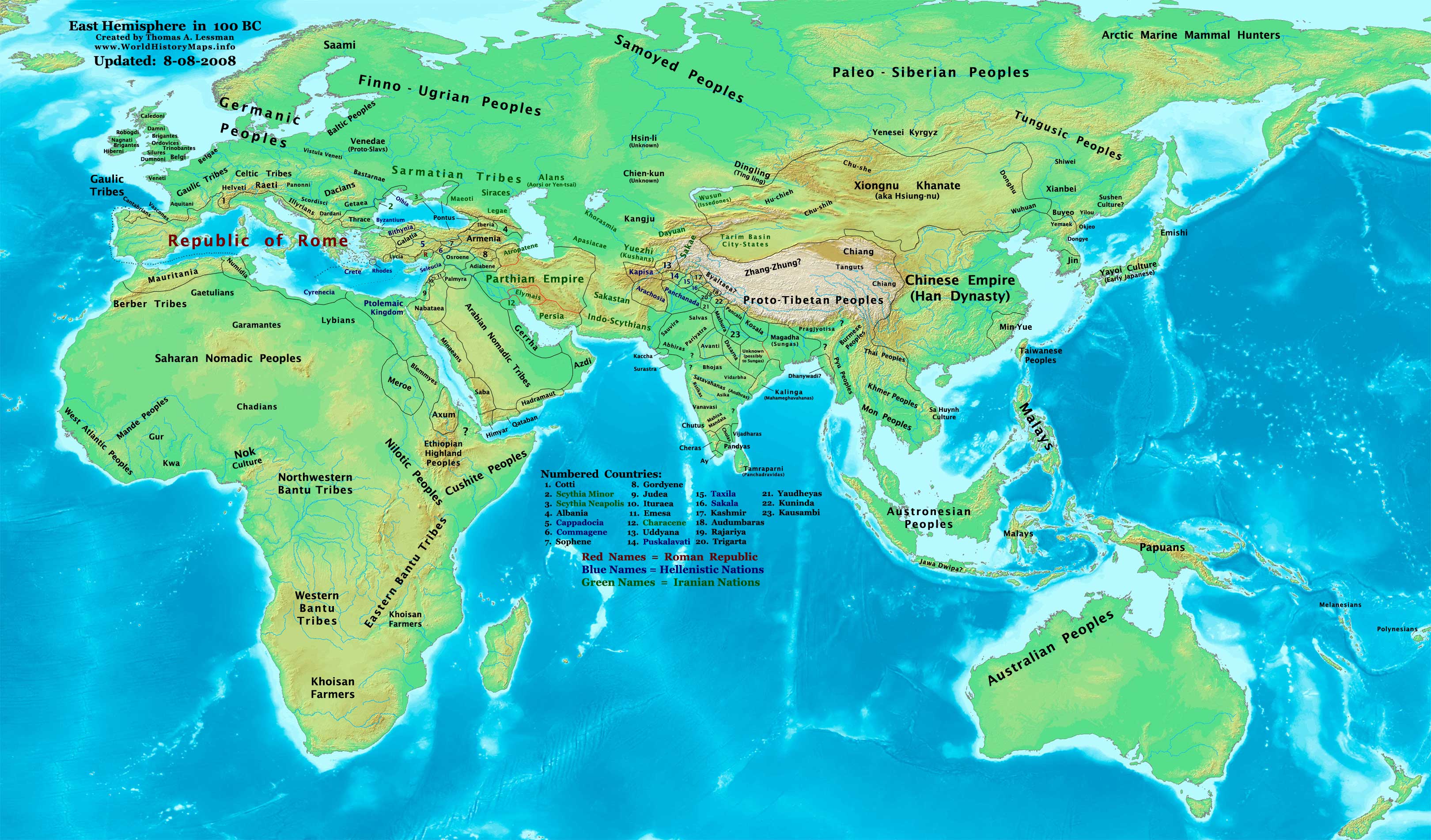|
Dharmaguptaka
The Dharmaguptaka (Sanskrit: ŗ§ßŗ§įŗ•ćŗ§ģŗ§óŗ•Āŗ§™ŗ•ćŗ§§ŗ§ē; ; ) are one of the eighteen or twenty early Buddhist schools from the ancient region of Gandhara, now Pakistan. They are said to have originated from another sect, the MahńęŇõńĀsakas from the Oddiyana, Oddiyana kingdom in northwestern Pakistan. The Dharmaguptakas had a prominent role in early Central Asian and Chinese Buddhism, and their PrńĀtimokŠĻ£a (monastic rules for bhikkhu, bhikŠĻ£us and bhikkhuni, bhikŠĻ£uŠĻáńęs) are still in effect in East Asian countries to this day, including China, Vietnam, Korea, and Japan as well as the Philippines. They are one of three surviving Vinaya lineages, along with that of the Theravada, TheravńĀda and the Mulasarvastivada, MŇęlasarvńĀstivńĀda. Etymology ''Guptaka'' means "preserver" and ''dharma'' "law, justice, morality", and, most likely, the set of laws of Northern Buddhism. Doctrinal development Overview The Dharmaguptakas regarded the path of a ŇõrńĀvaka (''ŇõrńĀvakayńĀna' ... [...More Info...] [...Related Items...] OR: [Wikipedia] [Google] [Baidu] |
Early Buddhist Schools
The early Buddhist schools refers to the History of Buddhism in India, Indian Buddhist "doctrinal schools" or "schools of thought" (Sanskrit: ''vńĀda'') which arose out of the early unified Buddhist monasticism, Buddhist monastic community (Sangha (Buddhism), saŠĻÖgha) due to various schisms in the history of Buddhism, history of Indian Buddhism. The various splits and divisions were caused by differences in interpretations of the Monasticism, monastic rule (Vinaya), doctrinal differences and also due to simple geographical separation as Buddhism spread throughout the Indian subcontinent. The early Buddhist community initially split into two main NikńĀyas (monastic groups, divisions), the Sthavira nikńĀya, Sthavira ("Elders"), and the MahńĀsńĀŠĻÉghika ("Great Community"). This initial split occurred either during the reign of Ashoka, AŇõoka (c. 268-232 BCE) or shortly after (historians disagree on the matter). Later, these groups became further divided on doctrinal grounds int ... [...More Info...] [...Related Items...] OR: [Wikipedia] [Google] [Baidu] |
Vinaya
The Vinaya (Pali and Sanskrit: ŗ§Ķŗ§Ņŗ§®ŗ§Į) refers to numerous monastic rules and ethical precepts for fully ordained monks and nuns of Buddhist Sanghas (community of like-minded ''sramanas''). These sets of ethical rules and guidelines developed over time during the Buddha's life. More broadly, the term also refers to the tradition of Buddhist ethical conduct. The term "Vinaya" also refers to a genre of Buddhist texts which contain these precepts and rules and discuss their application, along with various stories of how the rules arose and how they are to be applied. Various lists and sets of Vinaya precepts were codified and compiled after the Buddha's death in different Vinaya texts.The 17th Karmapa Orgyen Trinley Dorje. "The development of the Vinaya rules for monastics and the Pratimoksha Sutra precepts". August 2022. Transcribed by Adele Tomlin, ''Dakini Translations'', 02 September 2022. As one of the main components of the canonical Buddhist canons (TripiŠĻ≠akas), a ... [...More Info...] [...Related Items...] OR: [Wikipedia] [Google] [Baidu] |
ńÄgama (Buddhism)
In Buddhism, an ''ńĀgama'' (ŗ§Üŗ§óŗ§ģ Sanskrit and PńĀli, Tibetan: ŗĹ£ŗĹīŗĹĄŗľč ( Wylie: lung) for "sacred work"Monier-Williams (1899), p. 129, see "ńÄgama," retrieved 12 Dec 2008 from "U. Cologne" at http://www.sanskrit-lexicon.uni-koeln.de/scans/MWScan/MWScanpdf/mw0129-Akhara.pdf. or "scripture"Rhys Davids & Stede (1921-25), p. 95, entry for "ńÄgama," retrieved 12 Dec 2008 from "U. Chicago" at http://dsal.uchicago.edu/cgi-bin/philologic/getobject.pl?c.0:1:2582.pali.) is a collection of early Buddhist texts. The five ''ńĀgama'' together comprise the '' SuttapiŠĻ≠aka'' of the early Buddhist schools, which had different recensions of each ńĀgama. In the Pali Canon of the Theravada, the term ''nikńĀya'' is used. The word ''ńĀgama'' does not occur in this collection. Meaning In Buddhism, the term ''ńĀgama'' is used to refer to a collection of discourses (Sanskrit: '' sŇętra''; Pali: ''sutta'') of the early Buddhist schools, which were preserved primarily in Chinese translation, ... [...More Info...] [...Related Items...] OR: [Wikipedia] [Google] [Baidu] |
Sarvastivada
The ''SarvńĀstivńĀda'' (; ;) was one of the early Buddhist schools established around the reign of Ashoka (third century BCE).Westerhoff, The Golden Age of Indian Buddhist Philosophy in the First Millennium CE, 2018, p. 60. It was particularly known as an Abhidharma tradition, with a unique set of seven canonical Abhidharma texts.Westerhoff, 2018, p. 61. The SarvńĀstivńĀdins were one of the most influential Buddhist monastic groups, flourishing throughout North India, especially Kashmir and Central Asia, until the 7th century CE. The orthodox Kashmiri branch of the school composed the large and encyclopedic '' Abhidharma MahńĀvibhńĀŠĻ£a ŇöńĀstra'' around the time of the reign of Kanishka (c. 127‚Äď150 CE). Because of this, orthodox SarvńĀstivńĀdins who upheld the doctrines in the ''MahńĀvibhńĀŠĻ£a'' were called '' VaibhńĀŠĻ£ikas.'' There have been debates about the exact chronological emergence of Sarvastivadins from Sthavira nikńĀya. According to the TheravńĀdin '' Dńę ... [...More Info...] [...Related Items...] OR: [Wikipedia] [Google] [Baidu] |
Chinese Buddhism
Chinese Buddhism or Han Buddhism ( zh, s=śĪČšľ†šĹõśēô, t=śľĘŚā≥šĹõśēô, first=t, poj=H√†n-tho√Ęn HuŐćt-k√†u, j=Hon3 Cyun4 Fat6 Gaau3, p=H√†nchu√°n F√≥ji√†o) is a Chinese form of Mahayana Buddhism. The Chinese Buddhist canonJiang Wu, "The Chinese Buddhist Canon" in ''The Wiley Blackwell Companion to East and Inner Asian Buddhism'', p. 299, Wiley-Blackwell (2014). draws from the traditions of Confucianism and Taoism as well as the rituals of local Chinese folk religion, folk religions. Chinese Buddhism emphasizes the study of Mahayana sutras and treatises. Some of the most important scriptures in Chinese Buddhism include the ''Lotus Sutra'', ''Avatamsaka Sutra, Flower Ornament Sutra'', Vimalakirti Sutra, ''Vimalakirtńę Sutra'', ''MahńĀyńĀna MahńĀparinirvńĀŠĻáa SŇętra, Nirvana Sutra,'' and Shorter SukhńĀvatńęvyŇęha SŇętra, ''AmitńĀbha Sutra''. Chinese Buddhism is the largest institutionalized religion in mainland China.Cook, Sarah (2017). The Battle for China's Spirit: Religious R ... [...More Info...] [...Related Items...] OR: [Wikipedia] [Google] [Baidu] |
MahńęŇõńĀsaka
MahńęŇõńĀsaka (; ) is one of the early Buddhist schools according to some records. Its origins may go back to the dispute in the Second Buddhist council. The Dharmaguptaka sect is thought to have branched out from the MahńęŇõńĀsaka sect toward the end of the 2nd or the beginning of the 1st century BCE. History There are two general accounts of the circumstances surrounding the origins of the MahńęŇõńĀsakas. The TheravńĀdin '' Dipavamsa'' asserts that the MahńęŇõńĀsaka sect gave rise to the SarvńĀstivńĀda sect., p. 50 However, both the ''ŇöńĀriputraparipŠĻõcchńĀ'' and the ''Samayabhedoparacanacakra'' record that the SarvńĀstivńĀdins were the older sect out of which the MahńęŇõńĀsakas emerged. Buswell and Lopez also state that the MahńęŇõńĀsaka was an offshoot of the SarvńĀstivńĀdins, but group the school under the '' VibhajyavńĀda'', "a broad designation for non-Sarvastivada strands of the Sthaviranikaya", which also included the Kasyapiya. The MahńęŇõńĀsaka sect is thought ... [...More Info...] [...Related Items...] OR: [Wikipedia] [Google] [Baidu] |
MahńĀsńĀŠĻÉghika
The MahńĀsńĀŠĻÉghika (Brahmi script, Brahmi: ūĎÄęūĎÄ≥ūĎÄłūĎÄ≤ūĎÄłūĎÄĀūĎÄĖūĎÄļūĎÄď, "of the Great Sangha (Buddhism), Sangha", ) was a major division (nikńĀya) of the early Buddhist schools in India. They were one of the two original communities that emerged from the first schism of the Pre-sectarian Buddhism, original pre-sectarian Buddhist tradition (the other being the Sthavira nikńĀya, Sthavira nikaya). This schism is traditionally held to have occurred after the Second Buddhist council, which occurred at some point during or after the reign of Kalashoka. The MahńĀsńĀŠĻÉghika nikńĀya developed into numerous sects which spread throughout History of India, ancient India. Some scholars think that the MahńĀsńĀŠĻÉghika Vinaya (Monasticism, monastic rule) represents the oldest Buddhist monastic source, although some other scholars think that it is not the case. While the MahńĀsńĀŠĻÉghika tradition is no longer in existence, many scholars look to the MahńĀsńĀŠĻÉghika tradition as an ea ... [...More Info...] [...Related Items...] OR: [Wikipedia] [Google] [Baidu] |
Theravada
''TheravńĀda'' (; 'School of the Elders'; ) is Buddhism's oldest existing school. The school's adherents, termed ''TheravńĀdins'' (anglicized from Pali ''theravńĀdńę''), have preserved their version of the Buddha's teaching or ''Dharma (Buddhism), Dhamma'' in the PńĀli Canon for over two millennia. The PńĀli Canon is the most complete Buddhist canon surviving in a Indo-Aryan languages, classical Indian language, PńĀli, which serves as the school's sacred language and ''lingua franca''.Crosby, Kate (2013), ''Theravada Buddhism: Continuity, Diversity, and Identity'', p. 2. In contrast to MahńĀyńĀna and VajrayńĀna, TheravńĀda tends to be conservative in matters of doctrine (''pariyatti'') and monastic discipline (''vinaya''). One element of this Religious conservatism, conservatism is the fact that TheravńĀda rejects the authenticity of the Mahayana sutras (which appeared onwards). Consequently, TheravńĀda generally does not recognize the existence of many Buddhas and bodhisattva ... [...More Info...] [...Related Items...] OR: [Wikipedia] [Google] [Baidu] |
Mulasarvastivada
The MŇęlasarvńĀstivńĀda (; ) was one of the early Buddhist schools of India. The origins of the MŇęlasarvńĀstivńĀda school and their relationship to the SarvńĀstivńĀda remain largely unknown, although various theories exist. The continuity of the MŇęlasarvńĀstivńĀda monastic order remains in Tibetan Buddhism, although until recently, only MŇęlasarvńĀstivńĀdin bhikŠĻ£us (monks) existed. The Tibetan Buddhist tradition of bhikŠĻ£uŠĻáńę (nuns) officially commenced in Bhutan on 23 June 2022, when 144 women were ordained. Previously, bhiksuni ordinations were only administered in Taiwan, and later in Bodh Gaya, India. History In India The relationship of the MŇęlasarvńĀstivńĀda to the SarvńĀstivńĀda school is a matter of dispute; modern scholars lean towards classifying them as independent. Yijing claimed that they derived their name from being an offshoot of SarvńĀstivńĀda, but Buton Rinchen Drub stated that the name was a homage to SarvńĀstivńĀda as the "root" (''mŇęla'') of all ... [...More Info...] [...Related Items...] OR: [Wikipedia] [Google] [Baidu] |
Oddiyana
(also: ''UŠłćŠłćiyńĀna'', ''UŠłćŠłćńĀyńĀna'', ''UdyńĀna'' or 'OŠłćŠłćiyńĀna'), a small region in early medieval India, is ascribed importance in the development and dissemination of VajrayńĀna Buddhism.‚ÄėUŠłćŠłćiyńĀna and Kashmir‚Äô, pp 265-269 ‚ÄėThe Ňöaiva Exegesis of Kashmir‚Äô, in M√©langes tantriques √† la m√©moire d‚ÄôH√©l√®ne Brunner. Tantric Studies in Memory of H√©l√®ne Brunner, Collection Indologie 106, EFEO, Institut fran√ßais de Pondich√©ry (IFP), ed. Dominic Goodall and Andr√© Padoux, 2007.) Tibetan Buddhist traditions view it as a Beyul (Tibetan: ŗŶŗĺ¶ŗŶŗľčŗĹ°ŗĹīŗĹ£, Wylie: sbas-yul), a legendary heavenly place inaccessible to ordinary mortals. Padmasambhava, the eighth-century Buddhist master who was instrumental in the introduction of Buddhism to Tibet, was believed to have been born in Oddiyana. The Dzogchen Siddha Garab Dorje is likewise attributed to this region. It is ascribed importance in the development and dissemination of VajrayńĀna Buddhism. The ... [...More Info...] [...Related Items...] OR: [Wikipedia] [Google] [Baidu] |
Bodhisattva
In Buddhism, a bodhisattva is a person who has attained, or is striving towards, '' bodhi'' ('awakening', 'enlightenment') or Buddhahood. Often, the term specifically refers to a person who forgoes or delays personal nirvana or ''bodhi'' in order to compassionately help other individuals reach Buddhahood. In the Early Buddhist schools, as well as modern TheravńĀda Buddhism, bodhisattva (or bodhisatta) refers to someone who has made a resolution to become a Buddha and has also received a confirmation or prediction from a living Buddha that this will come to pass. In TheravńĀda Buddhism, the bodhisattva is mainly seen as an exceptional and rare individual. Only a few select individuals are ultimately able to become bodhisattvas, such as Maitreya. In MahńĀyńĀna Buddhism, a bodhisattva refers to anyone who has generated '' bodhicitta'', a spontaneous wish and compassionate mind to attain Buddhahood for the benefit of all sentient beings. Mahayana bodhisattvas are spiritua ... [...More Info...] [...Related Items...] OR: [Wikipedia] [Google] [Baidu] |
ŇõrńĀvakayńĀna
''ŇörńĀvakayńĀna'' (; ; ) is one of the three '' yńĀnas'' known to Indian Buddhism. It translates literally as the "vehicle of listeners .e. disciples. Historically it was the most common term used by MahńĀyńĀna Buddhist texts to describe one hypothetical path to enlightenment. ŇörńĀvakayńĀna is the path that meets the goals of an Arhat‚ÄĒan individual who achieves liberation as a result of listening to the teachings (or following a lineage) of a SamyaksaŠĻÉbuddha. A Buddha who achieved enlightenment through ''ŇörńĀvakayńĀna'' is called a ''ŇörńĀvakabuddha'', as distinguished from a SamyaksaŠĻÉbuddha or pratyekabuddha. Use of the term Isabelle Onians asserts that although "the MahńĀyńĀna ... very occasionally referred contemptuously to earlier Buddhism as the HinayńĀna, the Inferior Way," "the preponderance of this name in the secondary literature is far out of proportion to occurrences in the Indian texts." She notes that the term ŇörńĀvakayńĀna was "the more politica ... [...More Info...] [...Related Items...] OR: [Wikipedia] [Google] [Baidu] |









